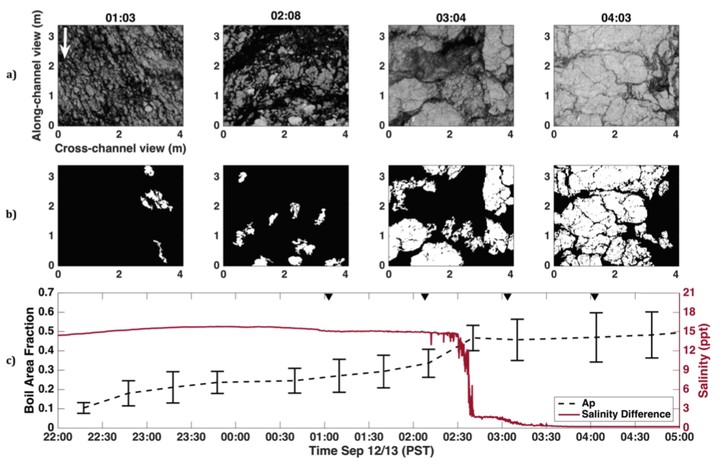Physical model study of beach profile evolution by sea level rise in the presence of seawalls

Abstract
Thermal infrared (IR) imagery is combined with in situ flow measurements to examine the impact of subsurface stratification on boil activity in the tidally influenced Snohomish River. Boils at the river’s surface are an expression of bottom- generated turbulence, appearing as a disruption of the cool-skin surface layer in the IR imagery. Boil activity has previously been linked to the amount of aeration occurring in river systems. A synthesis of data across an ebb tide showed that when a tidal salinity intrusion retreated, turbulent kinetic energy and dissipation rapidly increased by 700% and 575%, respectively. Additionally, the mean boil area fraction in the IR field of view increased by almost 500% across the entire ebb tide time series, with approximately half of this change occurring during the period when the stratification ceased. Using an empirical method for estimating aeration, the change in areal fraction associated with the loss of density stratification is predicted to generate a more than 300% increase in the air-water gas flux.